Get started with Arria10 SoC/FPGA SOM Development Platform
Unpacking
Remove the Development Platform from box and place above the ESD free area. Use anti-static pad/mat with proper grounding to place the Development Platform. Also make sure that, below deliverables are received without any physical damage.
Development kit contains:
- Arria10 SoC/FPGA SOM Development Platform
- 12V, 5A Power Supply
- USB cable (micro-B to standard-A)
- Safety guidelines
- JTAG Cable
- Heatsink + FAN
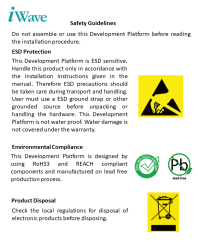
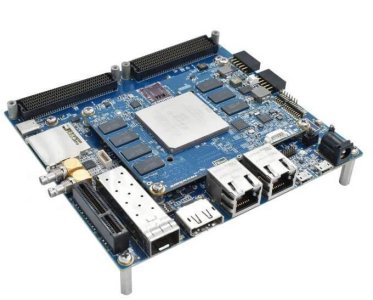

SAFETY GUIDELINES
Arria10 SoC/FPGA SOM
Development Platform
12V, 5A Power Supply
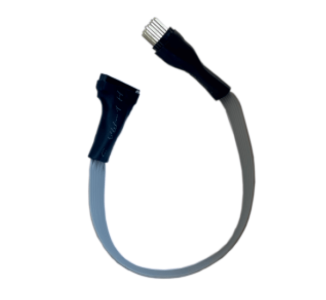

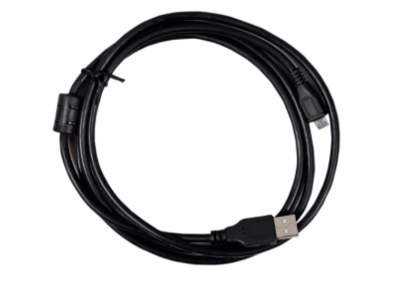
JTAG Cable
Heatsink + FAN
USB OTG CABLE
Get to know
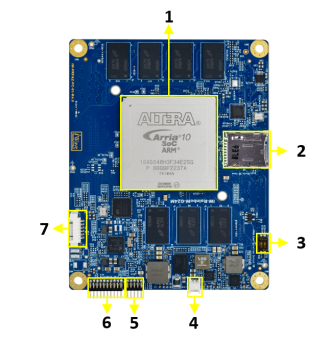

Arria10 SoC/FPGA SOM – Top view
Arria10 SoC/FPGA SOM – Bottom view
1. Arria10 SoC/FPGA
2. Micro SD Connector
3. Configuration Selection switch
4. FAN Header
5. AS Programming Header
6. JTAG Header
7. PMIC Programming Header
8. Board to Board connector 2
9. Board to Board connector 1
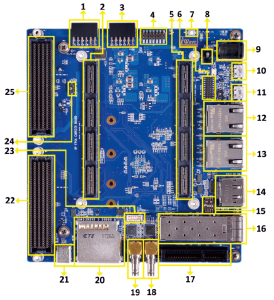
Arria10 SoC/FPGA SOM Development Platform – Top view
1. PMOD Connector 2
2. Board to Board Connector 1
3. PMOD Connector 1
4. JTAG Header
5. Board to Board Connector 2
6. GPIO Header
7. RESET Switch
8. ON/OFF Switch
9. Power Jack
10. Debug UART Connector
11. USB OTG Connector
12. EMAC1 Ethernet Jack
13. 2nd Ethernet Jack
14. Display Port
15. Channel Selection Switch
16. SFP+ Connector
17. PCIe X1 Connector
18. SDI IN HD BNC Jack
19. SDI OUT HD BNC Jack
20. Standard SD Connector
21. USB Type C Connector
22. FMC Connector 1
23. CAN Header
24. FMC Voltage Select Switch
25. FMC Connector 2
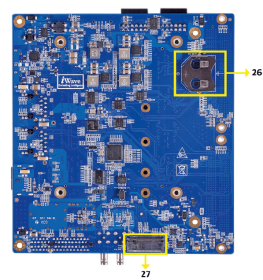
Arria10 SoC/FPGA SOM Development Platform – Bottom view
26. RTC Battery Holder
27. M.2 SATA Connector
Boot Switch Setting
Make sure On-Board Switch (SW1) is set properly as shown below image.
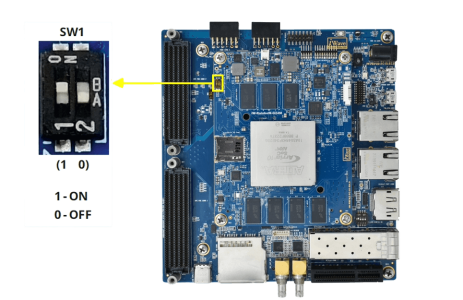
SW1-Boot Selection Switch.
Table 1: Boot Media Switch Settings
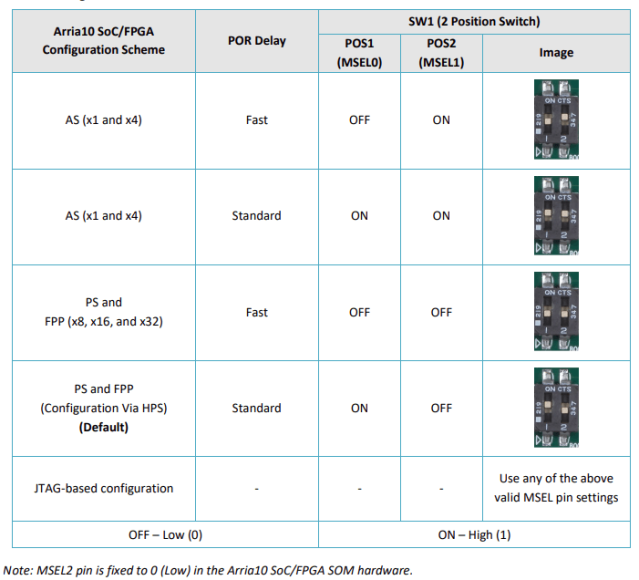
Debug Port Setting
Connect Type-A end of USB cable to PC and Micro-B end of USB cable to Development platform’s debug Micro USB connector(J5) as shown below .
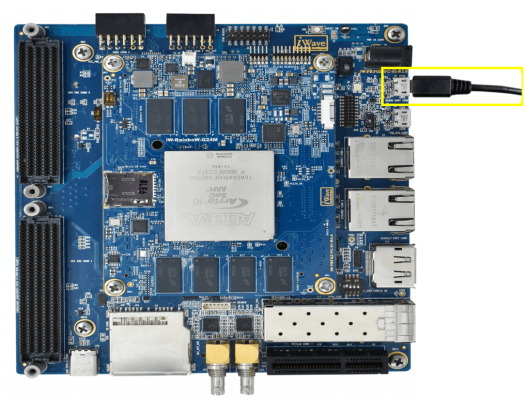
Install the driver for Debug Port in Host PC/Laptop using the below link.
https://ftdichip.com/products/ft232rq/
Micro SD Card Insertion
Make sure that the micro SD card with bootable image is inserted in the SOM as shown below.

Note: This step is not applicable for the SOMs where MicroSD is not used as boot device.
JTAG Connection
iW-RainboW-G24D Arria10 SoC/FPGA SOM Development platform support JTAG interface for FPGA Programming and debugging. Use the JTAG cable which is shipped with the development platform to connect SOM and USB Blaster.
Example USB Blaster which is tested with this Platform is mentioned below.
USB Blaster-2
Part Number: PL-USB2-BLASTER from Intel
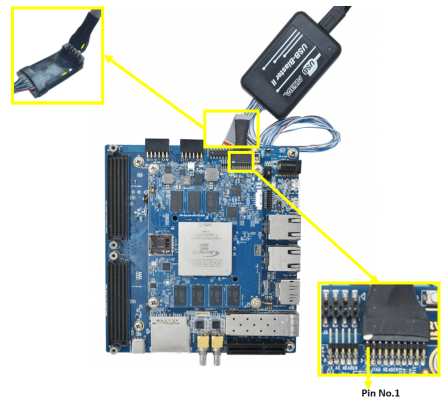
Heat Sink Integration
iW-RainboW-G24D Arria10 SoC/FPGA SOM Development platform comes with Heatsink+Fan attached to it. Make sure to power up the platform only with Heatsink+Fan attached.
Below is the Heatsink+Fan integration procedure for reference.
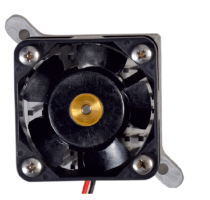
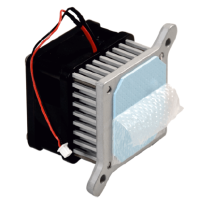
Heatsink + Fan
Peel off Thermal pad sticker
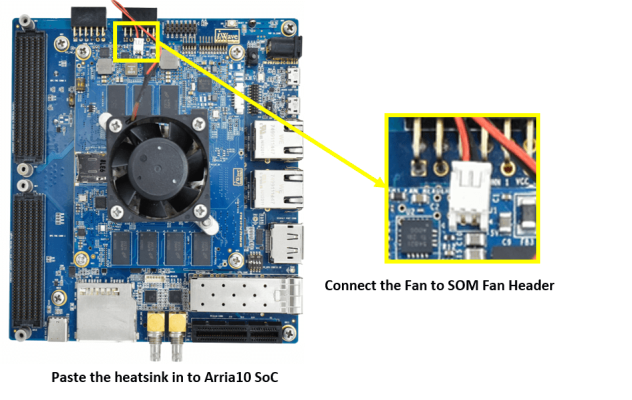
Powering ON
Connect the Power supply plug to the Power connector (J4) of the Development platform as shown below and switch ON the power supply. Once power is applied to the Development platform, the power LED in the Development platform will glow as shown in the below image.
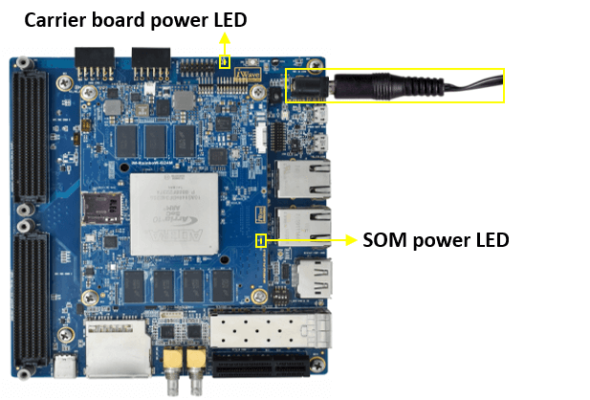
Warning:
- Do not try to connect any other Power Supply other than supplied along with Arria10 SoC/FPGA SOM Development Platform.
- Do not plug or remove the Arria10 SoC / FPGA SOM from carrier board with live power.
- Contact iWave, if power LEDs are not glowing.
Test Environment setup
Once power is applied to the Development Platform as explained in the previous section, boot messages being displayed in the debug terminal of the PC/Laptop which is connected to the Development platform. Press any key in terminal immediately to see the command prompt of the Boot loader or wait until OS boots. After OS boots, Login prompt being displayed in the debug terminal. Enter username and password as “root” to get the Linux command prompt as shown below.
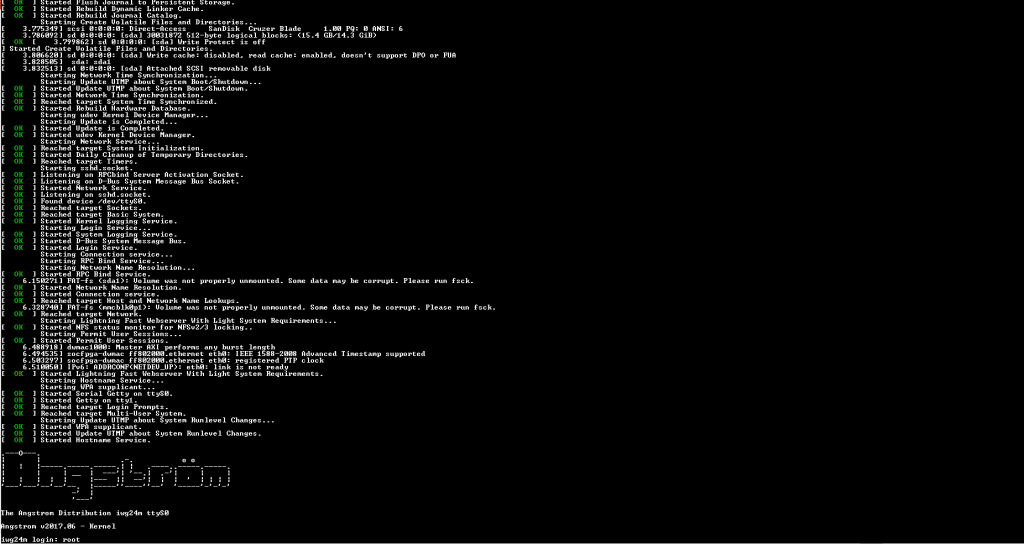
Command Prompt

